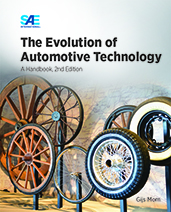Journal Article
Virtual Cylinder Pressure Sensor for Transient Operation in Heavy-Duty Engines
2015-04-14
2015-01-0872
Cylinder pressure-based combustion control is widely introduced for passenger cars. Benefits include enhanced emission robustness to fuel quality variation, reduced fuel consumption due to more accurate (multi-pulse) fuel injection, and minimized after treatment size. In addition, it enables the introduction of advanced, high-efficient combustion concepts. The application in truck engines is foreseen, but challenges need to be overcome related to durability, increased system costs, and impact on the cylinder head. In this paper, a new single cylinder pressure sensor concept for heavy-duty Diesel engines is presented. Compared to previous studies, this work focuses on heavy-duty Diesel powertrains, which are characterized by a relatively flexible crank shaft in contrast to the existing passenger car applications.

